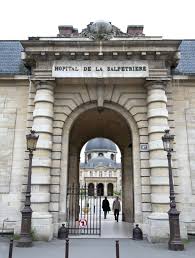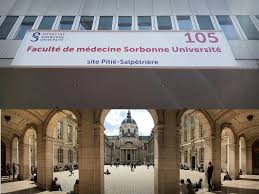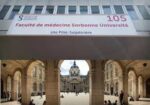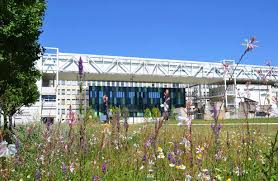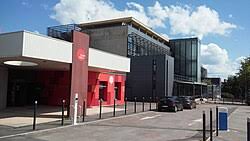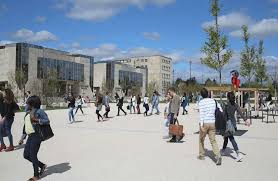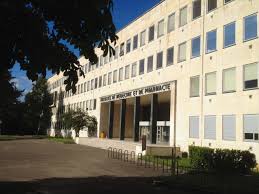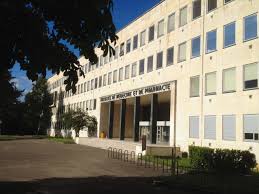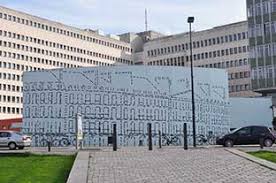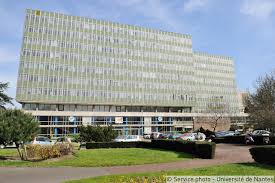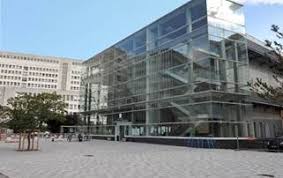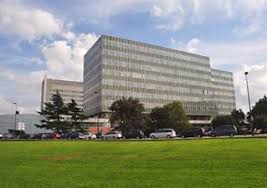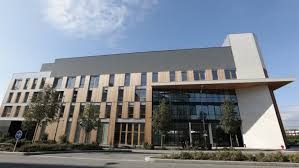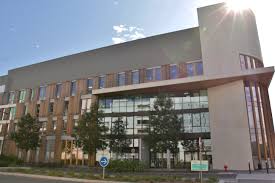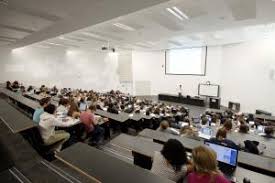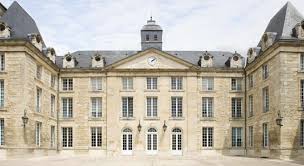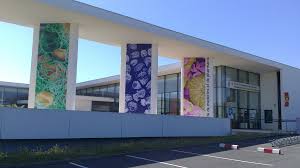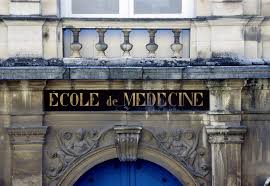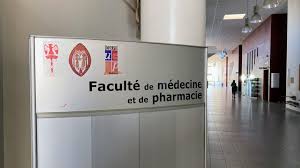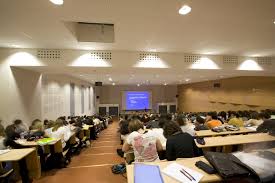Faculté de Santé de Sorbonne Université Paris The beginnings of the University of Paris go back to the early 13th century, when the community of Parisian masters and students (universitas magistrorum et scholarium Parisiensis) came into being as a communal school institution.
About Faculté de Santé de Sorbonne Université Paris
The new organization quickly competed with the traditional teaching carried out in the schools of the Notre-Dame Cathedral on the Île de la Cité. Since its founding, the University created its own laws and rules and became an organized institution segmented into four great faculties: liberal arts, law, medicine, and theology. Even without having buildings of its own at first, its intellectual and cultural presence quickly expanded, and the university was solidly based on the Left Bank of the Seine.
Faculté de Santé de Sorbonne Université Paris – Table of Contents
- About
- Advantages
- Ranking
- Departments And Course Duration
- Facilities And Infrastructure
- Fee Structure
- Required Documents
- Eligibility Criteria
- Admission Process
- Benefits
- Privileges And Benefits for Indian Students
- FAQ’s
To receive the surge of students arriving from all over Europe—who were organized into “nations” based on their countries of origin—many colleges were founded step by step along the Montagne Sainte-Geneviève’s slopes.
The College of Sorbonne, founded in 1257 by Robert de Sorbon, a renowned master in theology, was among them and became prominent right away. Officially validated by royal authority, this college was soon the focal institution of the Faculty of Theology.
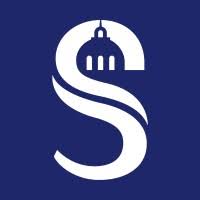
Faculté de Santé de Sorbonne Université Paris Accreditations, Affiliations, Recognitions
In the course of time, the Sorbonne gained an unparalleled reputation, strengthening the academic distinction and European impact of the University of Paris. While other faculties grew, teaching space still remained scattered about the same district, where colleges kept increasing steadily up to the 17th century. By that time, the construction of specialized libraries and lecture halls started forming a more organized academic space.
The 17th century was a turning point in the Sorbonne’s architectural and institutional history. In 1622, Cardinal de Richelieu, who became the head of the college, ordered the architect Jacques Lemercier to develop an ambitious building project.
This initiative aimed to concentrate the previously dispersed buildings into an intelligible and monumental group. Among the most impressive works of this phase was the building of the Sorbonne Chapel (1635–1642), an iconic building topped with a baroque-influenced dome, which continues to be a symbol for the institution.
Subsequently, during the latter part of the 18th century, the University moved its administrative center to the Collège Louis-le-Grand—abandoned after the expulsion of the Jesuits in 1762—yet another reinforcement of its presence within the Latin Quarter.
Through all of these relocations, no one project throughout this era essentially reorganized the spatial makeup of the faculties, which continued to develop over time within the historic core of Paris.
Advantages of Studying in Faculté de Santé de Sorbonne Université Paris
Reputable Institution:
Sorbonne University is a globally recognized institution, ranking among the world’s most prestigious universities.
Interdisciplinary Research:
The Faculty of Health is deeply involved in cutting-edge research, fostering an interdisciplinary approach to scientific challenges, particularly in medicine and health.
National & International Collaboration:
The university collaborates with national research organizations, offering students opportunities to engage with leading experts and projects in the field.
Diverse Program Offerings:
Students can pursue a wide array of bachelor’s and master’s degrees in medical and paramedical fields, with programs designed to build personalized career paths.
Career & Personal Development
Addressing 21st-Century Needs:
The academic programs are structured to address current and future challenges, preparing students for evolving global health landscapes.
International Opportunities:
The university offers various options for international students to join and participate in an international learning environment.
Prestige and Network:
An education from Sorbonne University provides access to a strong academic and professional network, enhancing future career prospects.
Resources and Support
Dedicated Facilities:
Students have access to facilities like conference rooms and libraries, supporting their academic and professional development.
Advanced Training:
The Faculty of Health creates numerous medical training departments and offers specialized diplomas, such as the DIPA (advanced practice nursing diploma), to foster expertise.
Latest Notifications:
Faculté de Santé de Sorbonne Université Paris – Ranking
The faculties of the major University of Paris were abolished during the French Revolution in 1793, but were latterly re-established under the Napoleonic Conglomerate in 1806.
This moment came to be honored as the sanctioned founding date of the Faculties of trades and lores. Yet, it was n’t until the Third Republic that the University passed a true institutional metamorphosis, accompanied by a rational reorganization of its academic spaces. The reforms that set up their capstone in 1896 with the reorganization of faculties into integrative” universities” swept through France with great speed, representing a clear move toward modernization.
The movement accompanied important social and scholarly changes: the relative democratization of advanced education, the gradual opening of university courses to women, specialization of fields, and the creation of technical exploration laboratories.
Against this background, the Sorbonne — long blamed for its inadequate installations — eventually passed an ambitious expansion and addition design. Under the direction of mastermind Henri- Paul Nénot, three consecutive construction juggernauts between 1882 and 1901 reshaped the Sorbonne into a monumental academic complex.
While Lemercier’s 17th- century structures were largely demolished( with the iconic tabernacle saved), the Faculties of trades and lores moved into their new demesne. The Faculty of Medicine, still, remained distinct having left its medieval home on rue de la Bûcherie by the late 18th century, it established itself on rue de l’École-de-Médecine, in demesne that integrated the former Royal School of Surgery.
The specialization of tutoring through the creation of academic chairpersons fostered the emergence of new disciplines and innovative fields of exploration. An elucidative illustration was the establishment of marine biology stations under the Faculty of Flores. Henri de Lacaze- Duthiers, a pioneering zoologist, innovated the Roscoff Marine Station in 1872 and the Banyuls sur- Mer Marine Station in 1882, laying the root for ultramodern marine biology.
Alongside these enterprises, expansive scientific collections including instance libraries and exploration samples were developed and are still saved within Sorbonne University, rounded by expansive libraries that supported advanced education.
The early twentieth century brought further expansion. The Sorbonne endured a steady increase in pupil figures, and its laboratories stood at the van of groundbreaking scientific discoveries. On rue Cuvier, in installations assigned to the Faculty of Lores, Marie Curie continued her pioneering exploration on radium following the death of her hubby Pierre in 1906. Her work was crowned in the award of the Nobel Prize in Chemistry in 1911, forcefully associating the Sorbonne with transnational scientific excellence.
During the interwar times, fresh institutions were erected to meet the growing requirements of education. Between 1914 and 1926, Henri- Paul Nénot constructed the Institute of Geography on rue Saint- Jacques, while the Institute of Art and Archaeology, designed by Paul Bigot, rose on rue Michelet( 1925 – 1928).
The Institute of Hispanic Studies, designed by Edouard Lambla de Sarria, followed in 1929, adding to the intellectual uproar of the Latin Quarter. After 1945, the expansion of the university accelerated. In 1956, the Faculty of Flores established laboratories on the Orsay lot.
Meanwhile, corridors of the Faculty of Trades were transferred to Censier and Nanterre, while the Halle aux Vins quad was allocated to the Faculty of Lores to give ultramodern installations. The ambitious Jussieu lot( now the Pierre and Marie Curie lot) was launched in 1958 under mastermind Urbain Cassan, although the design remained deficient.
Latterly, in 1962, mastermind Edouard Albert, with the support of culture minister André Malraux, introduced the notorious “ grid ” design and commissioned public artworks under the 1 cultural action.
The centerpiece of this lot was the 85- cadence-high Zamansky Tower, an architectural corner echoing the major Sorbonne’s astronomy palace. The social paroxysms of May 1968 steered in another major shift. The Faure Law, designed to contemporize and homogenize advanced education, granted lesser autonomy to institutions and resulted in the dissolution of the unified University of Paris. In its place, thirteen new universities were created. Among them were Paris- Sorbonne University( Paris IV), devoted to literature, trades, and humanities, and the University Pierre and Marie Curie( UPMC – Paris VI), specializing in wisdom and drugs.
It was during this period that the Faculté de Médecine Pitié- Salpêtrière was officially established. In the early 21st century, sweats were made to reunify and strengthen the fractured heritage of the Sorbonne. Paris- Sorbonne and UPMC began collaborations in the 2000s, which strengthened in June 2010 with the creation of the Pôle de recherche et d’enseignement supérieur( PRES) Sorbonne Universities.
This cooperation evolved into a Communauté d’universités et établissements( COMUE) fin 2015. That same time, the “ Sorbonne Universities in Paris for Education and Research ”( SUPER) design was named as an Initiative d’Excellence( Idex), furnishing recognition and backing for ambitious academic gambles. structure on this instigation, the chairpersons of Paris- Sorbonne and UPMC proposed the creation of a single, multidisciplinary, and encyclopedically honored university.
This vision materialized on January 1, 2018, with the sanctioned establishment of Sorbonne University, an ultramodern institution uniting centuries of academic tradition with slice- edge exploration and invention.
Departments And Course Duration in Faculté de Santé de Sorbonne Université Paris
Sorbonne Université’s Faculty of Health Sciences in Paris offers a comprehensive medical (MBBS-equivalent) program divided into three main departments/cycles and requires between 8 to 11 years for completion, including clinical and residency specialization.
Departments and Program Structure
-
First Cycle (PASS/PCEM)
-
-
- Duration: 2 years.
- Departments: Basic Medical Sciences—Anatomy, Physiology, Biochemistry.
- Purpose: Provides foundational medical knowledge; after the first year, a competitive exam determines eligibility for further study.
-
-
Second Cycle (DCEM)
-
-
- Duration: 4 years (typically years 2–6).
- Departments: Clinical Medicine—Internal Medicine, Surgery, Pediatrics, Pathology, Pharmacology. Includes extensive hospital rotations and internships.
- Purpose: Advanced clinical education with patient interaction under supervision.
-
-
Third Cycle (Internat/Residency)
-
- Duration: 3–5 years depending on specialization.
- Departments: Specialized Medicine—fields such as General Medicine, Cardiology, Surgery, Paediatrics, Radiology.
- Purpose: Full clinical responsibilities and research, leading to the State Doctor of Medicine Diploma (DES).
Other departments provided by the faculty include various health sciences such as midwifery, speech therapy, psychomotricity, and orthoptics, with training given on two principal sites: Pitié-Salpêtrière and Saint-Antoine.
Course Duration
- The minimum total duration for the MBBS-equivalent program at Sorbonne Université is 8 years, with some specializations extending up to 11 years—including all academic study, clinical rotations, and residency training.
- Most courses are taught in French, and some may offer modules in English for international students.
Sorbonne Université is known for its rigorous standards, competitive exams, and diverse training in medical and allied health sciences.
Latest Updates:
Facilities And Infrastructure in Faculté de Santé de Sorbonne Université Paris
1. Multiple Campuses & Teaching Sites
The Faculty operates across several major locations:
Pitié-Salpêtrière campus (91–105 boulevard de l’Hôpital, 13th arrondissement) serves as the main hub with extensive teaching and research facilities.
Saint-Antoine campus (27 rue de Chaligny, 12th arrondissement) hosts additional teaching spaces and the School of Midwifery.
Cordeliers site, located in the historic Cordeliers Convent, is home to the 3rd cycle of medical studies and the Cordeliers Research Centre (CRC).
2. Teaching & Conference Spaces
The Faculty hosts a wide array of events—from lectures to international congresses—across four affiliated sites: Pitié-Salpêtrière, Saint-Antoine, Tenon, and
At Pitié-Salpêtrière:
Amphitheaters include one with 300 seats, three with 200 seats, plus multiple smaller rooms (30–150 seats). At 105 boulevard de l’Hôpital: two 330-seat amphitheaters and rooms holding 50–80 people.
At Saint-Antoine:
A large amphitheater, an examination room, 12 mid-sized rooms (40 seats), two larger rooms (60 seats), plus a mezzanine; plus two 140- and 149-seat amphitheaters in the hospital wing.
Tenon: Two amphitheaters. Trousseau: One amphitheater and four additional rooms.
These venues are equipped with modern amenities: video projection, sound systems, Wi-Fi, and facilities for simultaneous broadcast across lecture halls.
3. Hospital Integration & Research Infrastructure
The Faculty is deeply integrated with the AP-HP Sorbonne Université University Hospital Group, comprising seven hospitals including Pitié-Salpêtrière, Saint-Antoine, Tenon, Trousseau, Rothschild, Charles-Foix, and la Roche-Guyon.
This hospital network supports both clinical training and advanced research:
Home to premier research centers such as the Paris Brain Institute, IHU-ICAN (cardiometabolic and nutrition), and Institute de la longevity Charles-Foix.
4. Educational Innovation & Simulation
Starting in the second cycle of medical studies, teaching is enhanced through the Health Simulation Teaching Department (Dieses)—using realistic simulation to develop clinical, technical, and interpersonal skills.
From the first year, students receive personalized tutoring, while later cycles emphasize collaborative, patient-centered “field” approaches to learning.
5. Research Units & Technical Platforms
The Faculty hosts numerous research structures:
12 joint research units (UMR-S), 2 mixed service units (UMS), 20 Clinical Research Groups (GRC), 2 University Institutes (IU), 3 University Hospital Institutes (IHU), 1 integrated cancer research site (SiRIC), and 5 University Hospital Federations (FHU).
One noteworthy facility: the Functional Imaging Laboratory (LIF) at Pitié-Salpêtrière, a UMR-S 678 dedicated to multimodal medical imaging and biomarker extraction.
6. Heritage Collections & Museums
The Faculty preserves significant historical collections. The former Dupuytren Museum of wax anatomical specimens, once at the Cordeliers Convent, has been relocated to Jussie Campus, enriching Sorbonne’s scientific archives and collections.
7. Student Well-being & Support Services
Students benefit from a robust Student Health and Preventive Medicine Service (SUMPPS) providing free consultations in general medicine, mental health, nutrition, contraception.
A health and disability service ensures accessibility support and accommodations.
Official site For Faculté de Santé de Sorbonne Université Paris: Click Here
Faculté de Santé de Sorbonne Université Paris Fee Structure
Approximately Estimated fee will be 70 lakhs to 80 lakhs.
Required Documents For Admission in Faculté de Santé de Sorbonne Université Paris
- Valid passport (minimum 18 months validity)
- 10th and 12th-grade certificates and mark sheets
- Birth certificate (translated into French if required).
- Ten passport-sized photographs
- Official invitation letter from the university
- Receipt of first-year tuition fee payment
- Medical fitness certificate
- Proof of French language proficiency (DELF/DALF, TCF, or equivalent, usually B2 level minimum).
Eligibility Criteria For Admission in Faculté de Santé de Sorbonne Université Paris
Completion of higher secondary education (10+2) or equivalent with strong performance in Biology, Chemistry, and Physics/Mathematics.
Minimum age: 17 years at the time of admission.
French language proficiency (B2 level is generally required since the program is taught in French).
International students must also meet Campus France requirements and secure a long-stay student visa.
Admission Process For Faculté de Santé de Sorbonne Université Paris
- Application Submission
- French & EU students apply via the Parcourse platform.
- International (non-EU) Students apply via Études en France (Campus France).
- Document Verification
- Submission of transcripts, language proof, and other required documents.
- Entrance Pathway
- Students must enroll in the PASS (Parkours daces Specified Santé) or LAS (License Access Santé) system for the first year.
- At the end of this year, students sit for competitive examinations to qualify for entry into the second year of medicine.
- Selection & Admission Confirmation
- Admission is highly selective; only top-ranking students’ progress to the medical program.
- Selected students confirm their seat by completing formalities with the faculty.
- Visa & Enrollment
- International students obtain a student visa through Campus France and finalize university enrollment in Tours.
Get more details about the colleges in France: Click Here
Benefits of Studying in Faculté de Santé de Sorbonne Université Paris
1. State-of-the-Art Research & Clinical Integration
The faculty takes advantage of its close collaboration with the AP-HP Sorbonne University Hospital Group, which consists of seven large hospitals (e.g., Pitié-Salpêtrière, Saint-Antoine, Tenon), offering unmatched clinical access to all specialties.
Its research platform extends across joint laboratories with INSERM and CNRS, clinical investigation units, research teams in subjects like cancer, health engineering, data sciences, and AI, and technology transfer and startup facilities (via SATT Lutech and Quadrivium).
2. Hands-on, Interdisciplinary Medical Training
A singular strength of the faculty is its integrated model of education: from tutoring in the first year to medical simulation labs and early immersive clinical training, both technical competencies and interpersonal competencies are acquired from early stages.
The model of training focuses on patient-centered learning and teamwork within a “field” approach that simulates real-world healthcare settings.
3. Educational Support & Student-Friendly Structure
The department is famous for its superb tutoring system, headed by senior students and staff—offering study materials, mock exams, and a family-friendly environment that enhances performance in the very competitive PASS/L.AS year.
The timetable of the course is well planned: regular morning routines (8:30–12:30) throughout the year, two fixed semesters for improved rhythm and adjustment, and early hospital exposure already from the 3rd year.
4. Innovation in Teaching & Global Engagement
Sorbonne incorporates podcasts as formal pedagogical resources—specifically “Le Serment d’Augusta”—that have been highly rated by students for independence, interactivity, and engagement with significant topics such as bias, mental health, and ethics.
The faculty is internationally connected with international programs that combine education, research, and integrated support for international students.
5. Holistic Student Support & Community
Student well-being is valued: under the SUMPPS health service, free medical consultations, psychological guidance, dietetics advice, etc. are available to students. Disability assistance is also provided to enable equal learning opportunities.
An active associative life enhances campus life: there are many student clubs in sports, arts, theatre, solidarity, and more—fostering community and individual growth.
6. High Academic Reputation & Career Prospects
Sorbonne is one of the world’s highest-ranked institutions and enjoys an international reputation. Its medical school has roots firmly planted in the Parisian healthcare and cultural landscape.
Graduate employment rates are high, with almost complete absorption into healthcare careers post-graduation, and a large alumni network—furthering career opportunities.
Privileges And Benefits for Indian Students in Faculté de Santé de Sorbonne Université Paris
1. Financial Aid & Scholarships
University-Level Support: Sorbonne Université offers social and financial assistance programs—including one-time aid (FSDIE), tuition fee waivers/refunds, and help finding accommodation. Eligibility depends on your circumstances; international students may apply if they can show a connection to France—for example, residency with their family for at least two years—or in some cases, if they are refugees.
Sorbonne Université Santé
France-Wide Scholarships: Indian students also have access to highly coveted scholarships like:
Charpak Scholarship (offered by the French Embassy in India): pays for tuition, visa costs, and has a stipend attached.
Some other international scholarships one might look into include the Eiffel Excellence and MOPGA schemes, particularly for postgrad studies.
2. High-Quality Medical Education & Global Recognition
Global Prestige: Sorbonne Université is one of the top institutions in the world. According to the 2024 QS World University Rankings for Medicine, Sorbonne stood at globally.
State-of-the-Art Clinical Education: The Faculty of Health Sciences provides intensive medical training with direct access to world-class hospitals (Pitié-Salpêtrière, Saint-Antoine, Tenon, etc.) and early.
Research-Focused: Students enjoy exposure to cutting-edge research, creative methodologies, and a richly collaborative academic setting.
3. Multicultural Setting & English-French Language Adaptability
Global Student Body: Sorbonne receives substantial international student intake; apparently, more than 25% of the medical students at the university are international as of 2023–24.
Courses in English & French Learning Opportunity: Although the majority of medical courses need French proficiency, there are some courses (especially postgraduate courses) offered in English. However, achieving a functional level in French is necessary for clinical practice.
University Insights
Studying in France provides a great chance to become proficient in French—a language valuable on a worldwide scale.
4. Post-Graduation Work & Visa Benefits
Work During Study: International students can work a maximum of ~20 hours a week, enabling them to earn their living and gain experience.
Post-Study Stay Permits: Students can apply for a temporary residence permit (APS) to stay and find employment for up to two years after graduating
Talent Passport: For deserving graduates, the “Talent Passport” can provide up to 4 years’ residency and is also extendable to spouses—enhancing long-term professional opportunities in France
5. Indo-French Education Cooperation
Mutual Recognition & Articulation: A two-way pact between India and France encourages mutual recognition of academic qualifications. This involves facilitation of student and teacher mobility and cooperation.
Large Academic Collaborations: Hundreds of MoUs between French and Indian universities—health sciences universities included—facilitate collaborative programs, strengthened research collaborations, and streamlined transitions
6. Diverse Student Life & Support Services
Student ID & Access to Services: Indian students can enjoy France’s social security system—health, transport, culture, and accommodation subsidy (such as CAF)—to further enhance affordability.
Exposure to Culture: To live in Paris is to experience comprehensive immersion—from museums to food, arts, and interdisciplinary student communities.
Safety & Infrastructure: France provides a secure and well-ordered setting with effective transport, enhancing campus life, and peace of mind Cliftons Study Abroad
FAQ’s
What financial support is available?
Students may apply for need-based social aid (bourses) via the CROUS Dossier Social Étudiant (DSE). You can also meet with CROUS social workers by appointment to discuss your options.
How do I register or apply?
Information about application timelines, submission portals, and student account activation can be found under the “Inscriptions” section on the faculty’s site. It also provides step-by-step guidance on the eCandidat application process.
What academic support services are available?
- Tutoring, mentoring, & assistance: Freshmen may benefit from diagnostic tests, tailored online modules, and peer tutoring programs.
- Well-being initiatives include emergency support, help with housing, access to cultural and sports resources, as part of an overarching student well-being strategy.
How internationally focused is the faculty?
Sorbonne Université encourages its diverse student body by offering:
- A wide catalog of health-related programs—including DU/DIU and paramedical diplomas.
- Inclusive campus culture and multilingual resources to support students from all backgrounds.
Also Check:

